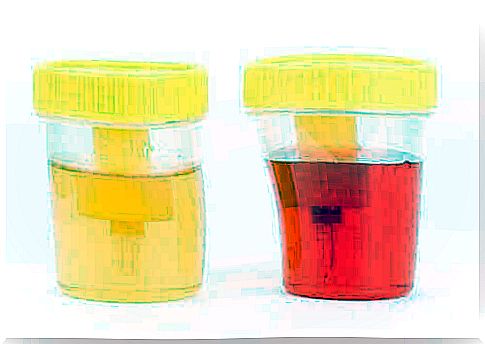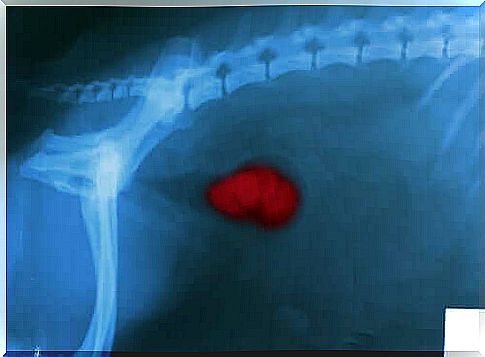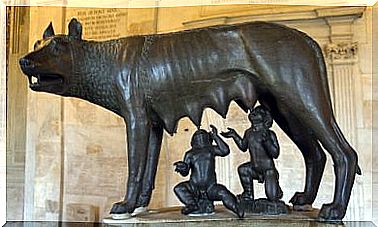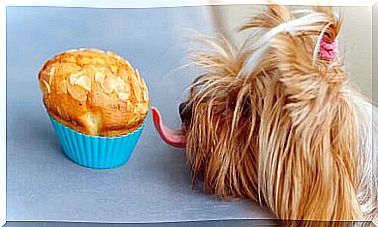Blood In The Dog’s Urine

When there is blood in the urine of dogs or any other animal, we speak of hematuria. This presence may not be visible at first glance and is sometimes only detected in specific urine tests. So it is defined as microscopic hematuria. On the other hand, if we clearly see the reddish urine, we are facing a case of macroscopic hematuria.
Bleeding through urine can appear for multiple reasons, almost all of which are pathological. In other words, the presence of blood in the dogs’ urine is not normal, and the cause must always be investigated. So, if you detect that your pet is urinating blood, get help as soon as possible from a veterinarian.

Most Common Causes of Blood in Dog Urine
In most cases, when the presence of blood in the dog’s urine is evident, the system that is usually affected is the urogenital. However, it could be that the failure is in the blood clotting, or that it is the result of an underlying disease.
The most common causes of hematuria, both microscopic and macroscopic, are:
Infections or parasitic diseases
Bacterial colonization at any level of the urinary tract can lead to blood in the urine due to inflammation and congestion in the area. Certain parasitosis, such as ehrlichiosis and leptospirosis, have hematuria among their possible symptoms.
kidney stones
The development of kidney stones or stones occurs when there is an excess of substances, such as calcium, oxalate and uric acid, that the kidney cannot expel. Then they accumulate to form crystals.
These crystals can remain anywhere in the urinary tract, from the kidneys to the bladder, and damage the inner lining, which causes bleeding.

Neoplasms
Neoplasms, both benign and malignant, are abnormal growths of masses in some organ or tissue. Prostate hyperplasia, hemangioma and angiosarcoma, for example, often cause bleeding.
Inflammation of the different organs of the urogenital system
Inflammatory processes, whatever they may be, are the cause of a localized increase in temperature and irrigation, which can cause, in certain cases, the rupture of vessels and their subsequent bleeding.
A non-pathological example is the vulvar swelling that female dogs suffer when they are in the proestrus phase of heat.
Pyometra
Uncastrated bitches, when they reach an advanced age, have a deteriorated wall of the uterus. This facilitates bacterial colonization and can lead to a serious infection that, if not corrected surgically, can be fatal.
Pyometra can cause bleeding through the urine, with blood coming from the reproductive system.
poison ingestion
Accidental consumption of certain poisons causes changes in the permeability of the kidneys. This could lead to red blood cell excretion. In addition, the poison can cause kidney failure and even the dog’s death.
Symptoms that may accompany hematuria
Blood in dog urine is not a symptom that appears in isolation because, as we said earlier, it always stems from another disease or condition. Therefore, when red blood cells are detected in urine, they are accompanied by changes in other measured parameters.
Normally, when hematuria is due to blood problems, other types of bleeding usually appear, such as epistaxis – nosebleeds – or bleeding from the mucous membranes.
Problems in the urogenital system, depending on their nature, can cause:
- Fever
- Diarrhea
- vomiting
- excess urine
- Problems with urinating
- Abdominal pain
- Anorexia
- Weakness
How to avoid blood in dog urine
If the dog contracts a disease, develops some type of neoplasm or faces age-related problems, we should focus on fighting them. However, certain infections and some pathologies can be prevented through a nutritious diet and correct hydration, which, in addition, prevent conditions such as obesity.









